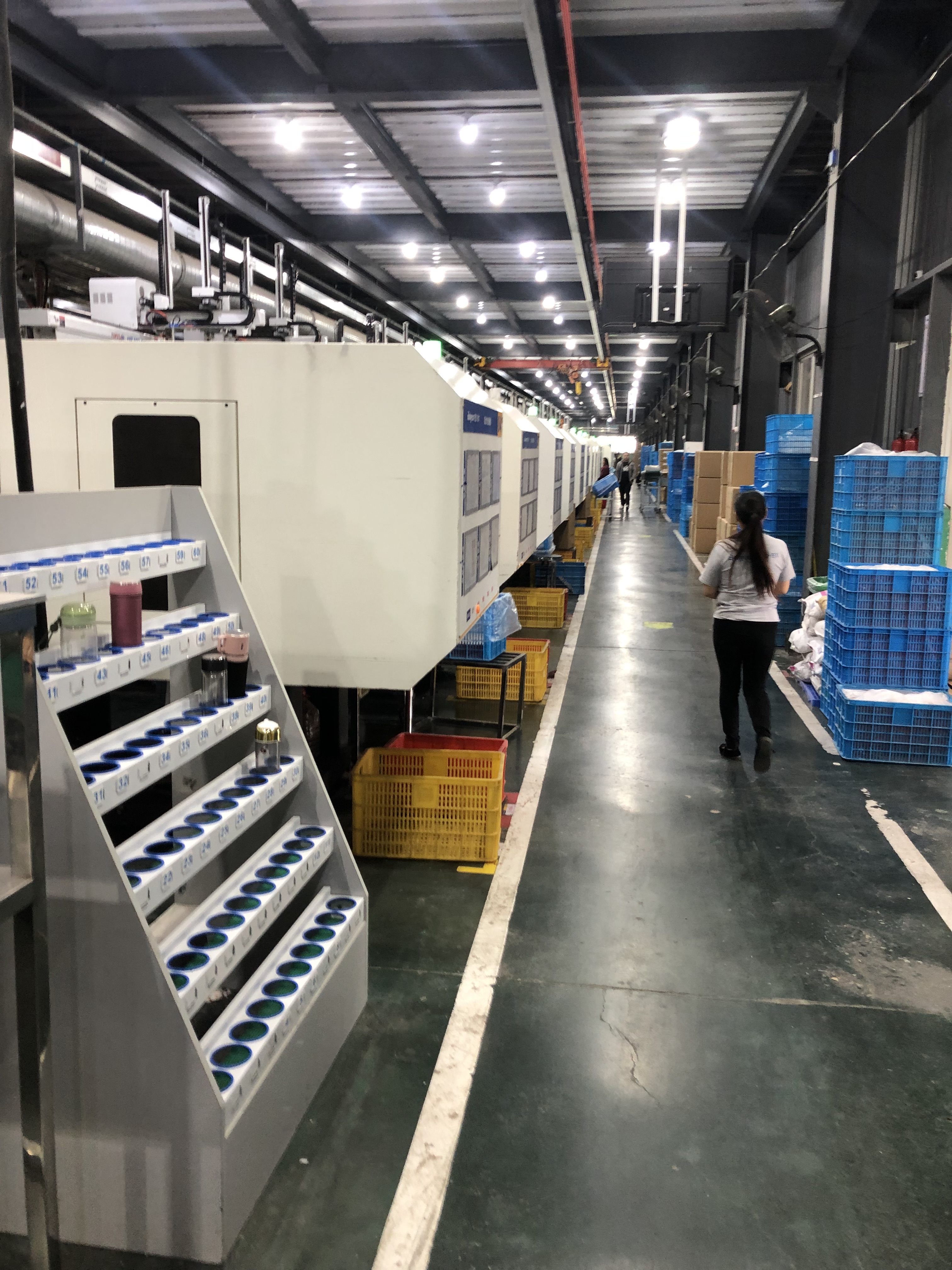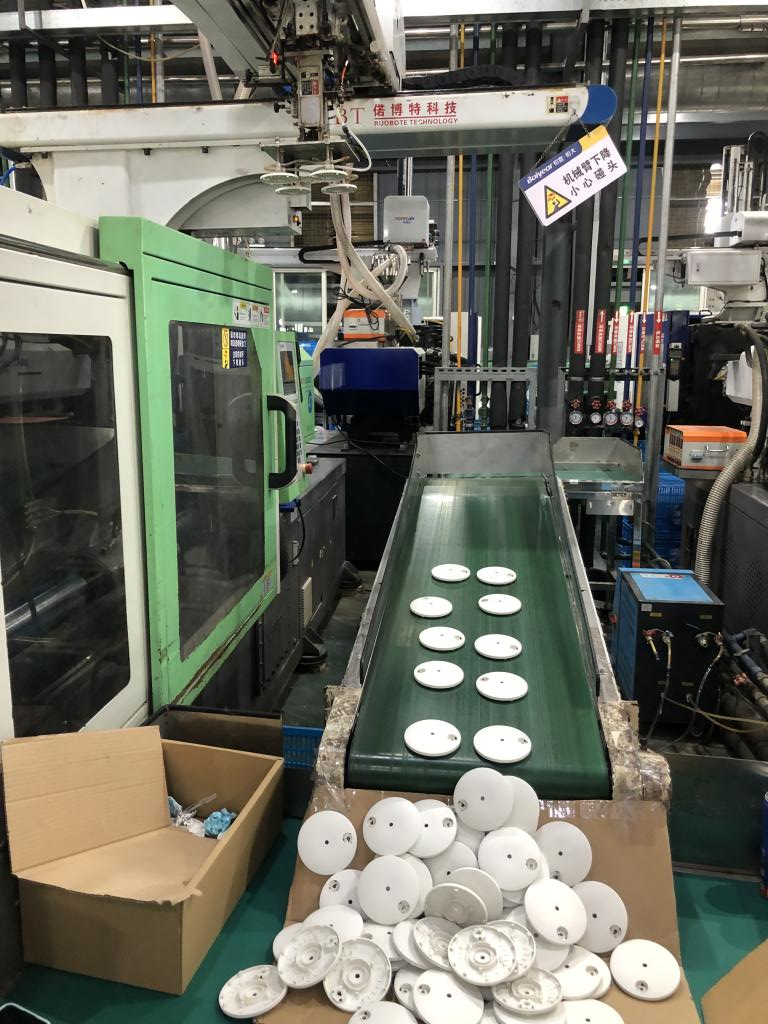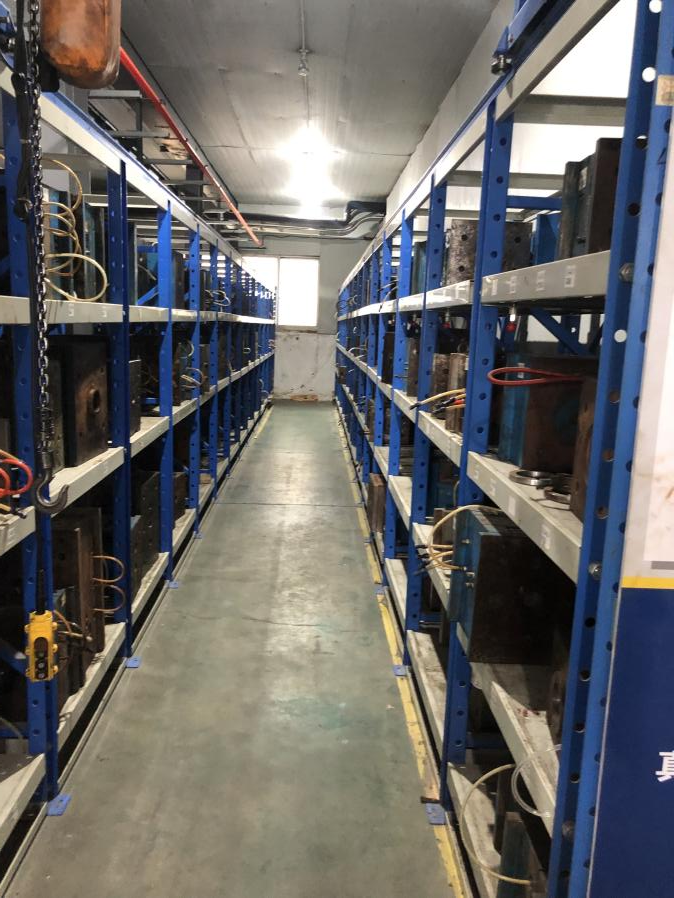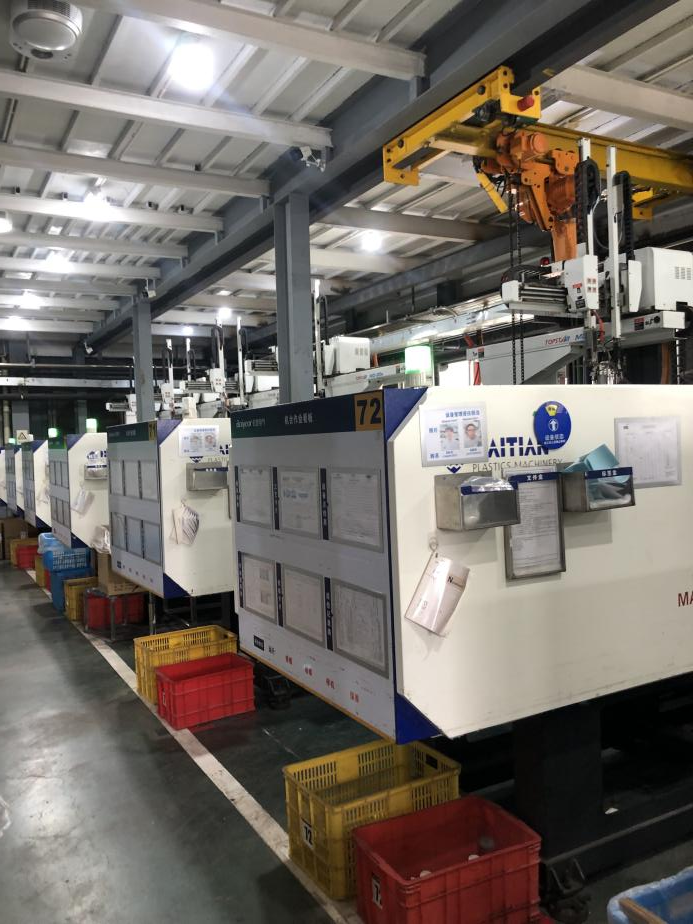By Andy from Baiyear factory
Upated November 5, 2022

1. Shrinkage rate
The form and calculation of thermoplastic molding shrinkage As mentioned above, the factors that affect thermoplastic molding shrinkage are as follows:
1.1 Plastic varieties During the molding process of thermoplastics, due to the volume change caused by crystallization, strong internal stress, large residual stress frozen in the plastic part, and strong molecular orientation, the shrinkage rate is higher than that of thermosetting plastics. In addition, the shrinkage after molding, the shrinkage after annealing or humidity conditioning treatment is generally larger than that of thermosetting plastics.
1.2 Characteristics of plastic parts When the molten material contacts the surface of the cavity, the outer layer immediately cools to form a low-density solid shell. Due to the poor thermal conductivity of the plastic, the inner layer of the plastic part is slowly cooled to form a high-density solid layer with large shrinkage. Therefore, the wall thickness, slow cooling, and high density layer thickness will shrink greatly. In addition, the presence or absence of inserts and the layout and quantity of inserts directly affect the direction of material flow, density distribution and shrinkage resistance, so the characteristics of plastic parts have a greater impact on the size and direction of shrinkage.
1.3 Factors such as the form, size and distribution of the feed inlet directly affect the direction of the material flow, the density distribution, the pressure-holding feeding and the molding time. The direct feeding port and the feeding port with large cross-section (especially thicker cross-section) have small shrinkage but large directionality, and the wide and short feeding port has small directionality. Close to the feed port or parallel to the direction of the material flow, the shrinkage is large.
1.4 Molding conditions The mold temperature is high, the molten material cools slowly, the density is high, and the shrinkage is large, especially for the crystalline material, the shrinkage is larger due to the high crystallinity and the large volume change. The mold temperature distribution is also related to the internal and external cooling and density uniformity of the plastic part, which directly affects the
It affects the size and direction of the shrinkage of each part. In addition, the holding pressure and time also have a great influence on the contraction, the contraction is small but the direction is large when the pressure is high and the time is long. The injection pressure is high, the viscosity difference of the molten material is small, the interlayer shear stress is small, and the elastic rebound after demolding is large, so the shrinkage can be appropriately reduced, the material temperature is high, the shrinkage is large, but the directionality is small. Therefore, adjusting the mold temperature, pressure, injection speed and cooling time and other factors during molding can also appropriately change the shrinkage of the plastic part.
When designing the mold, according to the shrinkage range of various plastics, the wall thickness and shape of the plastic part, the form, size and distribution of the feeding port, the shrinkage rate of each part of the plastic part is determined by experience, and then the cavity size is calculated. For high-precision plastic parts and when it is difficult to master the shrinkage rate, the following methods should be used to design the mold:
① Take the smaller shrinkage rate for the outer diameter of the plastic parts, and the larger shrinkage rate for the inner diameter, so as to leave room for correction after mold trial.
②The mold test determines the form, size and molding conditions of the gating system.
③ The plastic parts to be post-processed are post-processed to determine the dimensional change (the measurement must be done after 24 hours after demoulding).
④ Correct the mold according to the actual shrinkage.
⑤ Retry the mold and change the process conditions to slightly modify the shrinkage value to meet the requirements of the plastic parts.

2. Liquidity
2.1 The fluidity of thermoplastics can generally be analyzed from a series of indices such as molecular weight, melt index, Archimedes spiral flow length, apparent viscosity and flow ratio (process length/plastic wall thickness). Small molecular weight, wide molecular weight distribution, poor molecular structure regularity, high melt index, long spiral flow length, low apparent viscosity, and large flow ratio, the fluidity is good. in injection molding. According to the mold design requirements, the fluidity of commonly used plastics can be roughly divided into three categories:
①Good fluidity PA, PE, PS, PP, CA, poly(4) methyl pentylene;
②Polystyrene series resin (such as ABS, AS), PMMA, POM, polyphenylene ether with medium fluidity;
③Poor fluidity PC, hard PVC, polyphenylene ether, polysulfone, polyarylsulfone, fluoroplastic.
2.2 The fluidity of various plastics also changes due to various molding factors. The main influencing factors are as follows:
① The higher the temperature, the higher the fluidity of the material, but the different plastics are also different, PS (especially impact-resistant and high MFR value), PP, PA, PMMA, modified polystyrene (such as ABS, AS) , PC, CA and other plastics fluidity varies greatly with temperature. For PE, POM, the temperature increase or decrease has little effect on its fluidity. Therefore, the former should adjust the temperature to control the fluidity during molding.
②When the injection pressure increases, the molten material will be greatly sheared, and the fluidity will also increase, especially PE and POM are more sensitive, so the injection pressure should be adjusted to control the fluidity during molding.
③The form, size, layout, cooling system design, flow resistance of molten material (such as surface finish, thickness of forehearth section, cavity shape, exhaust system) and other factors directly affect the flow of molten material in the cavity. The actual fluidity in the interior, if the temperature of the molten material is lowered and the fluidity resistance is increased, the fluidity will decrease. When designing the mold, a reasonable structure should be selected according to the fluidity of the plastic used. During molding, the material temperature, mold temperature, injection pressure, injection speed and other factors can also be controlled to properly adjust the filling situation to meet the molding needs.

3. Crystallinity
Thermoplastics can be divided into two categories: crystalline plastics and non-crystalline (also known as amorphous) plastics according to their absence of crystallization during condensation.
The so-called crystallization phenomenon is that when the plastic changes from the molten state to the condensation, the molecules move independently, completely in a disordered state, and the molecules stop moving freely, according to a slightly fixed position, and there is a tendency to make the molecular arrangement a normal model. a phenomenon.
As the standard for judging the appearance of these two types of plastics, it depends on the transparency of the thick-walled plastic parts of the plastic. Generally, crystalline materials are opaque or translucent (such as POM, etc.), and amorphous materials are transparent (such as PMMA, etc.). But there are exceptions, such as poly (4) methyl pentylene is a crystalline plastic but has high transparency, ABS is an amorphous material but not transparent.
When designing a mold and selecting an injection molding machine, the following requirements and precautions for crystalline plastics should be noted:
①The heat required for the material temperature to rise to the molding temperature is large, and equipment with large plasticizing capacity should be used.
②The heat released during cooling is large, so it should be fully cooled.
③ The specific gravity difference between the molten state and the solid state is large, the molding shrinkage is large, and shrinkage holes and pores are prone to occur.
④Fast cooling, low crystallinity, small shrinkage and high transparency. The crystallinity is related to the wall thickness of the plastic part, the wall thickness is slow cooling, the crystallinity is high, the shrinkage is large, and the physical properties are good. Therefore, the crystalline material should control the mold temperature as required.
⑤ Significant anisotropy and large internal stress. After demolding, the uncrystallized molecules tend to continue to crystallize and are in a state of energy imbalance, which is prone to deformation and warpage.
⑥ The crystallization temperature range is narrow, and it is easy to inject unmelted material into the mold or block the feeding port.
4. Heat-sensitive plastics and easily hydrolyzed plastics
4.1 Thermal sensitivity means that some plastics are more sensitive to heat, and the heating time is long at high temperature or the cross-section of the feeding port is too small, and when the shearing action is large, the material temperature increases and is prone to discoloration, degradation, and decomposition. It has this characteristic. plastics are called heat-sensitive plastics. Such as rigid PVC, polyvinylidene chloride, vinyl acetate copolymer, POM, polychlorotrifluoroethylene, etc. When heat-sensitive plastics are decomposed, by-products such as monomers, gases, and solids are generated, especially some decomposed gases are irritating, corrosive or toxic to human body, equipment and molds. Therefore, attention should be paid to mold design, selection of injection molding machines and molding. Screw injection molding machines should be selected. The cross-section of the gating system should be large. The mold and barrel should be chrome-plated, and there should be no corners. Add stabilizer to weaken its heat-sensitive properties.
4.2 Even if some plastics (such as PC) contain a small amount of water, they will decompose under high temperature and high pressure. This property is called easy hydrolysis, which must be heated and dried in advance.
5. Stress cracking and melt fracture
5.1 Some plastics are sensitive to stress, and are prone to internal stress during molding and are brittle and easy to crack. The plastic parts will crack under the action of external force or solvent. To this end, in addition to adding additives to the raw materials to improve the crack resistance, attention should be paid to drying the raw materials, and the molding conditions should be selected reasonably to reduce the internal stress and increase the crack resistance. A reasonable shape of plastic parts should be selected, and measures such as inserts should not be set to minimize stress concentration. When designing the mold, the demolding slope should be increased, and a reasonable feeding port and ejection mechanism should be selected. During molding, the material temperature, mold temperature, injection pressure and cooling time should be properly adjusted to avoid demoulding when the plastic parts are too cold and brittle. , After molding, the plastic parts should also be post-treated to improve crack resistance, eliminate internal stress and prohibit contact with solvents.
5.2 When the polymer melt with a certain melt flow rate passes through the nozzle hole at a constant temperature and its flow rate exceeds a certain value, obvious transverse cracks on the melt surface are called melt fracture, which will damage the appearance and physical properties of the plastic parts. Therefore, when selecting polymers with high melt flow rate, etc., the cross-section of the nozzle, runner, and feed port should be increased, the injection speed should be reduced, and the material temperature should be increased.
6. Thermal performance and cooling rate
6.1 Various plastics have different thermal properties such as specific heat, thermal conductivity and thermal deformation temperature. When plasticizing with a high specific heat, a large amount of heat is required, and an injection molding machine with a large plasticizing capacity should be selected. The cooling time of the plastic with high heat distortion temperature can be short and the demoulding is early, but the cooling deformation should be prevented after demoulding. Plastics with low thermal conductivity have a slow cooling rate (such as ionic polymers, etc.), so they must be fully cooled, and the cooling effect of the mold must be strengthened. Hot runner molds are suitable for plastics with low specific heat and high thermal conductivity. Plastics with large specific heat, low thermal conductivity, low thermal deformation temperature and slow cooling rate are not conducive to high-speed molding, and appropriate injection molding machines must be selected and mold cooling must be strengthened.
6.2 Various plastics are required to maintain an appropriate cooling rate according to their types and characteristics and the shape of plastic parts. Therefore, the mold must be set with a heating and cooling system according to the molding requirements to maintain a certain mold temperature. When the material temperature increases the mold temperature, it should be cooled to prevent the plastic parts from being deformed after demoulding, shorten the molding cycle, and reduce the crystallinity. When the plastic waste heat is not enough to keep the mold at a certain temperature, the mold should be equipped with a heating system to keep the mold at a certain temperature to control the cooling rate, ensure fluidity, improve filling conditions or control the plastic parts to cool slowly. Prevent uneven cooling inside and outside of thick-walled plastic parts and improve crystallinity. For those with good fluidity, large molding area and uneven material temperature, according to the molding conditions of plastic parts, heating or cooling is sometimes used alternately or local heating and cooling are used together. For this purpose, the mold should be equipped with a corresponding cooling or heating system.

Post time: Nov-29-2022






